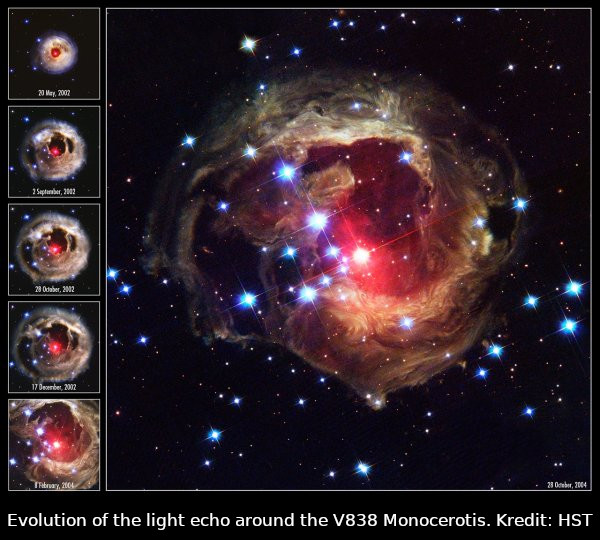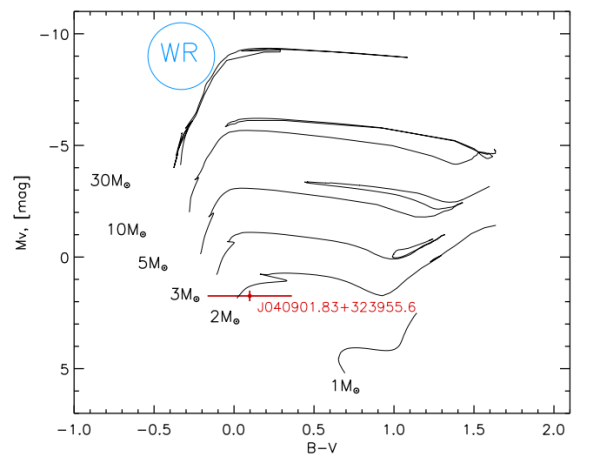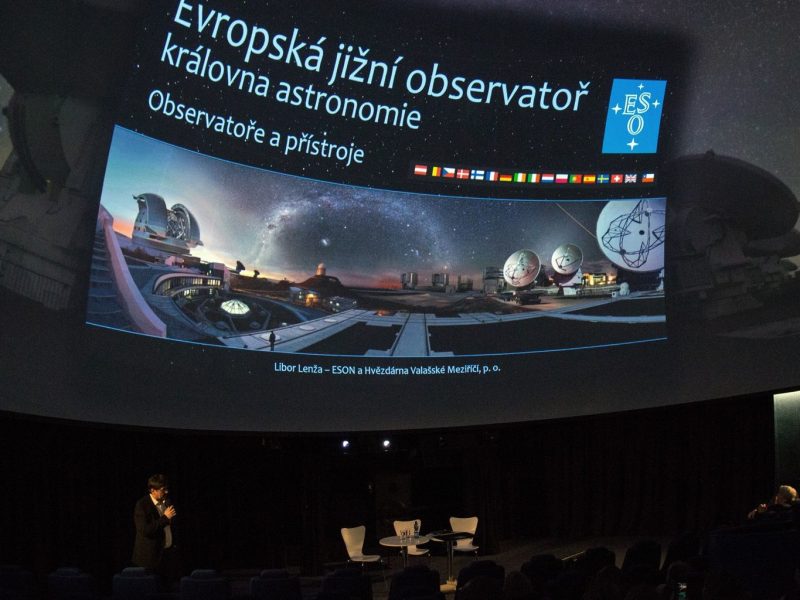The star V838 Monocerotis is one of the most well-known stars even among the public, although they may not even be aware of this designation. Pictures of the light echo after its explosion, which took place in 2002, appeared into almost all media. Tiina Liimets of ASU’s Stellar Department led a team that systematically observed the star for more than 13 years. Their findings have been accepted for publication in the journal Astronomy&Astrophysics.
Until 2002, V838 Monocerotis (i.e. the 838th known variable star in the constellation of the Unicorn) did not appear in catalogs at all. In January 2002, however, it exploded, the star with an original brightness apparently somewhere around 15 magnitudes reached a brightness that allows comfortable observation in small telescopes, i.e. 6.75 magnitudes. It behaved like a nova from the beginning, and after brightening, it began to fade rapidly, as expected from a nova. However, in March that year the star began to brighten again, especially in the infrared range, another brightening in the near infrared range occurred a month later. The light curve did not correspond to any known star. The mechanism of the massive explosion thus remains unexplained, but hypotheses favor the collision of two stars, which would fit this star in the rare group of red luminous novae. The explosion ejected a large amount of molecular dust into the surrounding space.
More on the website of the Astronomical Institute (in Czech).
More informations and Contact
- Na čem pracujeme: V838: pomalu se probouzející kráska; M. Švanda
- T. Liimets a kol., V838 Mon: A slow waking up of Sleeping Beauty?, Astronomy & Astrophysics, 670 (2023) A13, preprint arXiv:2211.06629
- Contact: Tiina Liimets, Ph.D., tiina.liimets@asu.cas.cz



